 Having begun his career in healthcare in 1997, Julien de Salaberry founded The Propell Group (Propell), a venture investor and advisory firm based in Singapore and focused on seed investment in healhtech startups, in 2012. Propell’s portfolio includes 14 Healthtech startups to date.
Having begun his career in healthcare in 1997, Julien de Salaberry founded The Propell Group (Propell), a venture investor and advisory firm based in Singapore and focused on seed investment in healhtech startups, in 2012. Propell’s portfolio includes 14 Healthtech startups to date.
He’s one of the co-writers of the book iDisrupted (published in November 2014) which focuses on creating an understanding of the significant technological changes that are just beginning to re-shape our daily lives. End of 2015, he co-founded the Galen Growth Asia, the Asia HealthTech Advocacy Group, with other healthtech entrepreneurs to build the momentum in this nascent ecosystem.
He shared with Innovation Is Everywhere his insights about how IoT is shaping the future of healthcare in Asia.
IEV: How do you see the future of healthcare in Asia?
Julien: Technology will radically transform healthcare in Asia and the world, at a research, a healthcare professional and a patient level. There are 2 distinct types of challenges in Asia. Mature Asia (Hong Kong, Singapore, Australia, etc.) has a ageing population with escalating costs. Their challenge is to find ways to be able to deliver the same high standard care as in the past at the same price with a dwindling workforce. Developing Asia (India, Indonesia, etc.) has a very large population but a very limited under-invested healthcare system. For example, in Indonesia, ~7% of the 250 million population has hepatitis C but there are only ~7 hepatology specialists in the country to treat them. If they would try to build a healthcare system like in France or UK, they would need to train specialists which would take several decades. HealthTech gives an opportunity for these countries to leapfrog their existing systems and provide access to affordable healthcare. With telemedicine for example, people could get a diagnosis from a specialist from another country.
IEV: What are the innovations in HealthTech that have the most potential to become mainstream?
Julien: Every piece in the healthcare value chain is impacted. Let’s take the healthcare research & development for example. To test the new drug’s safety and efficiency before launch, there is the requirement for a clinical trial. When testing the product in humans, researchers need to track regularly if the patients get the benefits or not (with blood tests etc). It primarily done manually so the patients need to regularly visit a clinic and go through many tests. But technology is making this more efficient and dynamic. They can now apply a patch on the chest of the patient, for example, that will gather information automatically and share it with the doctor simultaneously. HealthTech brings real time information about the patient and has the potential to significantly reduce the cost of clinical trials as there are fewer resources required. And the same type of efficiency gains are possible in medical manufacturing, healthcare provider and at distribution level.
IEV: What are the main trends in HealthTech and can you give some examples of promising HealthTech startups?
Julien: There is a trend to use data analytics and digital therapeutics for the management of diseases, such as diabetes. This new field of medicine consists of immersive programs that act remotely to change individual’s behaviors in order to achieve positive therapeutic outcomes. For example, Proteus (US) develops digital products that collect and aggregate various behavioral, physiological and therapeutic metrics into personal management tools delivered through an app; Glooko (US) offers a diabetes management solution, Healint (Singapore) created an app to support patients with migraines. Other examples are Omada Health (US) for diabetes and Propeller Health (US) for respiratory health management.

Healint offers an app to support patients with migraines
Data analytics for research purposes is also a growing trend. Flatiron Health (US), for example, is on a mission to improve cancer care by organizing the world’s real-world oncology data. Illumina (US) and 23andme are in the genomics sequencing area.
Other trends I have noticed are solutions for electronic health records, hospital outpatient management, healthcare planning for governments, appointments booking with startups such as Practo (India) or telehealth with startups such as MyDoc (Singapore).
IEV: Where does Asia stand in terms of innovation in the HealthTech sector compared to the rest of the world and which countries stand out?
Julien: Asia has started more recently so it is not as established as in the US. But there are many interesting and promising ventures, like the startup Healint to cure migraines. If you look at the total number of HealthTech companies in terms of volume in Asia, the top 3 countries are China, Singapore and India.
IEV: What are the conditions for HealthTech devices to become mainstream in Asia?
Julien: Regulations are many in healthcare. Also, the mindset of consumers and clinicians has to evolve to increase adoption. Practical matters such as internet connectivity and sometimes power supply interruptions can be a limitation but are improving. Affordability is another frequent issue. This can be compounded by payment questions. Can they buy and pay for their healthcare online? There is an overlap between IoT in healthcare and in fintech.
Read this presentation by The Propell Group to know more about “The future of healthcare in Asia – IoT for health program”.

